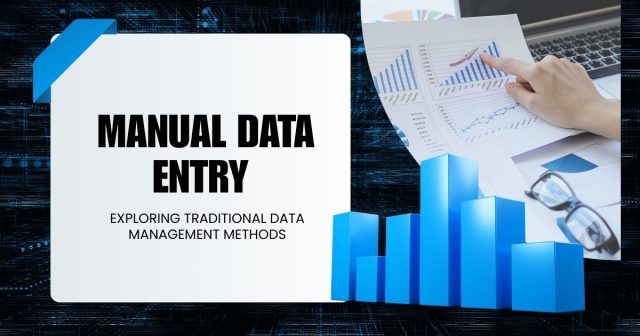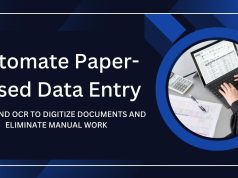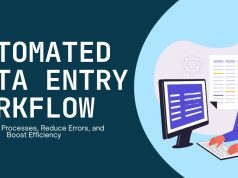Data entry is one of those tasks that feels both essential and tedious. It’s the backbone of so many business operations, from tracking sales leads to managing project timelines. But spending hours copying and pasting information into Google Sheets is not just boring; it’s a drain on your most valuable resource: time. What if you could reclaim those hours and eliminate the risk of human error?
Automating data entry is the solution. By setting up systems that automatically transfer information from various sources directly into your spreadsheets, you can create a more efficient, accurate, and scalable workflow. This means less time on administrative tasks and more time focusing on work that truly drives growth.
This guide will walk you through several practical methods to automate data entry in Google Sheets. We’ll explore everything from simple, built-in features to powerful third-party tools, giving you the knowledge to build a system that works for your specific needs. Prepare to say goodbye to manual data entry for good.
Why Automate Data Entry in Google Sheets?
Before diving into the “how,” let’s quickly cover the “why.” Manually entering data is prone to mistakes—a misplaced decimal, a typo, or a skipped row can lead to flawed reports and poor business decisions. Automation significantly reduces these risks, ensuring your data is consistent and reliable.

Beyond accuracy, the benefits are substantial:
- Save Time and Boost Productivity: The most immediate benefit is the time saved. Automating data entry frees you and your team to concentrate on more strategic tasks like analysis, planning, and customer engagement.
- Improve Data Accuracy: Automated systems don’t get tired or distracted. They transfer data exactly as it’s received, eliminating the typos and inconsistencies that come with manual input.
- Enhance Scalability: As your business grows, so does your data. Manual entry becomes a significant bottleneck. An automated workflow can handle an increasing volume of data without requiring more manual effort.
- Real-Time Data Access: Automation can update your spreadsheets in real-time or on a frequent schedule. This means your team is always working with the most current information, enabling faster and more informed decision-making.
How to Automate Data Entry in Google Sheets
There are several ways to automate data entry, ranging from beginner-friendly to more advanced. Let’s explore some of the most effective methods.

1. Use Google Forms for Direct Data Collection
One of the simplest ways to automate data entry is by using Google Forms. When someone fills out a Google Form, their responses can be automatically sent to a designated Google Sheet. This is perfect for collecting survey responses, customer feedback, event registrations, or contact information.
How to set it up:
- Create a Google Form: Go to Google Forms and create a new form. Add the questions you need to collect the desired information.
- Link to Google Sheets: In your form, go to the “Responses” tab. Click the green Sheets icon (“Create spreadsheet”).
- Choose a Destination: You can either create a new spreadsheet or select an existing one to house the responses.
- Automatic Updates: Once linked, every new form submission will automatically appear as a new row in your Google Sheet in real-time. Each question in your form corresponds to a column in the sheet.
This method is incredibly straightforward and requires no coding. It’s an excellent starting point for anyone looking to automate basic data collection.
2. Leverage Third-Party Automation Tools (Zapier, Make)
For more complex workflows, third-party automation platforms like Zapier or Make (formerly Integromat) are invaluable. These tools act as bridges between different apps, allowing you to create automated “workflows” or “zaps.” You can connect thousands of applications to Google Sheets without writing a single line of code.
Common use cases include:
- Social Media Monitoring: Automatically add a new row to a Google Sheet every time your brand is mentioned on Twitter.
- Email Marketing: When a new subscriber signs up via Mailchimp, add their details to a lead tracking sheet.
- E-commerce Sales: Log every new sale from your Shopify or WooCommerce store in a Google Sheet for real-time sales tracking.
- Project Management: When a new task is created in Asana or Trello, add it to a master project dashboard in Sheets.
How to get started with Zapier:
- Sign up for a Zapier account.
- Click “Create Zap.”
- Choose a Trigger App: This is the app where the data originates (e.g., Gmail, Stripe, Facebook Lead Ads). Select the specific trigger event (e.g., “New Email,” “New Payment”).
- Choose an Action App: Select Google Sheets as the action app.
- Select the Action: Choose the action you want to perform, such as “Create Spreadsheet Row.”
- Map the Data: Connect the data fields from your trigger app to the corresponding columns in your Google Sheet. For example, map the “Name” field from your form to the “Name” column in your sheet.
- Test and Activate: Run a test to ensure it works correctly, then turn on your Zap.
These platforms offer incredible flexibility and can automate data entry from almost any online service you use.
3. Utilize Built-in Google Sheets Functions
Google Sheets has powerful built-in functions that can pull data from other sources directly into your spreadsheet. This is a great way to consolidate information without manual copying.
- IMPORTRANGE: This function allows you to import a range of cells from another Google Sheet. It’s perfect for creating a master dashboard that pulls data from multiple departmental or project-specific sheets.
-
- Syntax:
=IMPORTRANGE("spreadsheet_url", "range_string") - Example:
=IMPORTRANGE("https://docs.google.com/spreadsheets/d/abc123xyz", "Sheet1!A1:D10")
You’ll need to grant access between the two sheets the first time you use it.
- Syntax:
- IMPORTDATA: Use this function to import data from a URL in .csv (comma-separated value) or .tsv (tab-separated value) format. This is useful for pulling in data from public datasets or reports.
-
- Syntax:
=IMPORTDATA("url")
- Syntax:
- IMPORTHTML: This function imports data from a table or list within an HTML page. You can use it to scrape data from websites, like stock prices or sports scores.
-
- Syntax:
=IMPORTHTML("url", "query", index) - Example:
=IMPORTHTML("https://en.wikipedia.org/wiki/List_of_countries_by_population_(United_Nations)", "table", 1)
- Syntax:
These functions are excellent for pulling in data that is already structured and available online or in other spreadsheets.
4. Create Custom Scripts with Google Apps Script
For those who need a fully customized solution, Google Apps Script is the answer. It’s a JavaScript-based platform that lets you extend the functionality of Google Workspace applications, including Sheets.
With Apps Script, you can create custom functions and set up triggers to automate virtually any data entry task.

Examples of what you can do:
- Fetch Data from an API: Write a script that connects to a third-party API (like a weather service, a stock market API, or your company’s internal database) and pulls data into your sheet on a set schedule.
- Parse Emails: Create a script that scans your Gmail inbox for specific emails (e.g., daily sales reports) and extracts the relevant information to populate a spreadsheet.
- Automate Reporting: Set up a time-driven trigger that runs a script every morning to gather data from various sources, format it into a clean report, and even email it to your team.
While this method requires some coding knowledge, it offers the highest level of customization and power. The Google Apps Script documentation is extensive, and there’s a large community of users who share scripts and solutions.
Choosing the Right Method for You
With several options available, how do you decide which one is best? Here’s a quick breakdown:
- For simple data collection from people: Use Google Forms. It’s easy, fast, and integrates seamlessly.
- For connecting to other web apps: Use a tool like Zapier or Make. They offer the most flexibility for integrating with services you already use.
- For consolidating data from other spreadsheets or web pages: Use built-in functions like IMPORTRANGE and IMPORTHTML.
- For completely custom or complex workflows: Use Google Apps Script. It provides the ultimate power and control over your automation.
You can also combine these methods. For instance, you could use Google Forms to collect initial data, then use a Zapier workflow to enrich that data with information from another app before adding it to your sheet.
Your Next Steps to Automation
Automating data entry is a transformative step toward a more efficient and data-driven workflow. By moving away from manual processes, you not only save time and reduce errors but also empower your team to focus on what matters most.
Start small. Identify one repetitive data entry task in your daily work and try automating it with one of the methods described above. You’ll likely be surprised at how simple it is to set up and how much time it saves. From there, you can gradually automate more of your processes, building a powerful, interconnected system that works for you.










